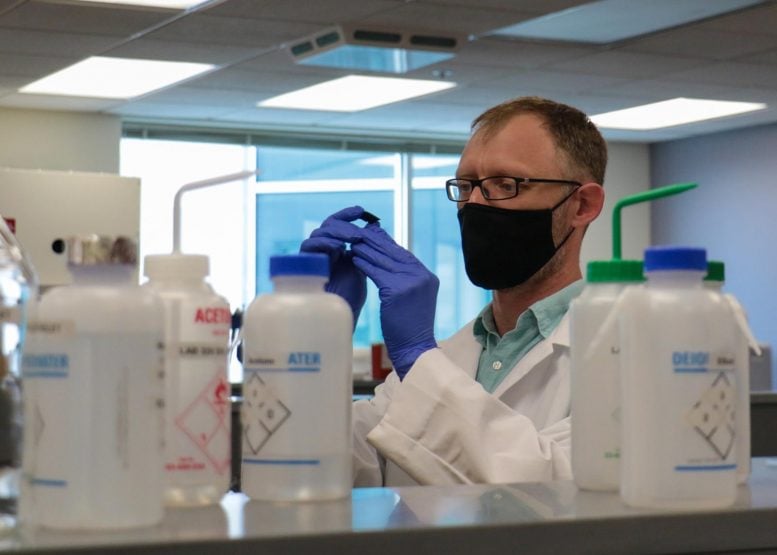It is common to analyze skid marks left by cars, but they cannot be used to identify a specific vehicle since they only leave impression patterns. In 1997, the National Center for Forensic Science, founded at UCF 1997, established a lab for forensics, led by Chemistry Associate Professor Matthieu Baudelet. They may have just unlocked a new way to examine skid marks for evidence.
In a recent study published in the journal Applied Spectroscopy, researchers describe how they classify the chemical profile of tires to link vehicles back to possible crime scenes.
The importance of tire evidence in forensics is often overlooked. In some cases, a chemical signature of tire treads may be relevant information in a hit-and-run accident or a collision involving multiple cars.
Each sample was analyzed via laser-induced breakdown spectroscopy (LIBS). It uses a laser to focus on a tire sample to create a microscopic plasma that emits light based on the chemical composition of the tire. Spectroscopy analyses this light and identifies the corresponding chemicals. The Mars landers (Curiosity and Perseverance) have used a similar technique to determine which elements are contained within rocks on the red planet.

Baudelet describes the process as complex yet fun. There’s a lot of data to be gleaned from tire evidence. The impression of patterns is there, but it does not necessarily explain everything. “Is it possible to figure out how they work by looking at their chemical components?”
To test his theory, Baudelet and graduate student John Lucchi manufactured skid marks in a laboratory environment using concrete and asphalt. When a tire is pressed into a laboratory-controlled surface at the same velocity as a moving vehicle, the impression of the tire’s braking is left on the road. In turn, this allows the team to analyze the chemical compositions of tire and road material and make chemical comparisons as a result.
The chemical signature of each tire is expected to produce a unique, corresponding skid mark. The current challenge is to identify how road elements such as oil, rainwater, and other vehicles affect the signature. According to Baudelet, the National Center for Forensic Science has been working to overcome the problem of interference with other evidence for years.
The team now intends to establish the process’s statistical reliability after the process shows promise. The standards for police evidence are justifiably high, which means reproducible, dependable procedures are needed next, Baudelet says. His ultimate goal is to see his team’s work provide justice in hit-and-run and vehicular violence cases. Law enforcement can use this new approach to trace the people who leave crime scenes.
“We are still working, but so far we have made significant progress,” Baudelet said. In addition to current forensic methods, this would be a great addition to the law enforcement “
Reference:
“Tire Classification by Elemental Signatures Using Laser-Induced Breakdown Spectroscopy” by John Lucchi, Dan Gluck, Sidney Rials, Larry Tang, and Matthieu Baudelet, 24 February 2021, Applied Spectroscopy.














